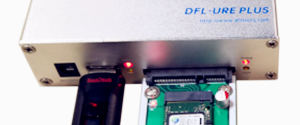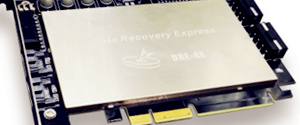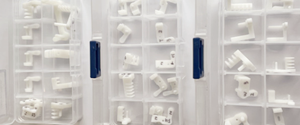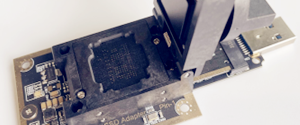Interleaving Of Hard Disk
A common operation when working with a hard disk is reading or writing a number of sectors of information in sequence. After all, a sector only contains 512 bytes of user data, and most files are much larger than that. Let’s assume that the sectors on each track are numbered consecutively, and say that we want to read the first 10 sectors of a given track on the hard disk. Under ideal conditions, the controller would read the first sector, then immediately read the second, and so on, until all 10 sectors had been read. Just like reading 10 words in a row in this sentence.
However, the physical sectors on a track are adjacent to each other and not separated by very much space. Reading sectors consecutively requires a certain amount of speed from the hard disk controller. The platters never stop spinning, and as soon as the controller is done reading all of sector #1, it has little time before the start of sector #2 is under the head. Many older controllers used with early hard disks did not have sufficient processing capacity to be able to do this. They would not be ready to read the second sector of the track until after the start of the second physical sector had already spun past the head, at which point it would be too late.
If the controller is slow in this manner, and no compensation is made in the controller, the controller must wait for almost an entire revolution of the platters before the start of sector #2 comes around and it can read it. Then, of course, when it tried to read sector #3, the same thing would happen, and another complete rotation would be required. All this waiting around would kill performance: if a disk had 17 sectors per track, it would take 17 times as long to read those 10 sectors as it should have in the ideal case!
To address this problem, older controllers employed a function called interleaving, allowing the setting of a disk parameter called the interleave factor. When interleaving is used, the sectors on a track are logically re-numbered so that they do not correspond to the physical sequence on the disk. The goal of this technique is to arrange the sectors so that their position on the track matches the speed of the controller, to avoid the need for extra “rotations”. Interleave is expressed as a ratio, “N:1”, where “N” represents how far away the second logical sector is from the first, how far the third is from the second, and so on.
An example is the easiest way to demonstrate this method. The standard for older hard disks was 17 sectors per track. Using an interleave factor of 1:1, the sectors would be numbered 1, 2, 3, .. , 17, and the problem described above with the controller not being ready in time to read sector #2 would often occur for sequential reads. Instead, an interleave factor of 2:1 could be used. With this arrangement, the sectors on a 17-sector track would be numbered as follows: 1, 10, 2, 11, 3, 12, 4, 13, 5, 14, 6, 15, 7, 16, 8, 17, 9. Using this interleave factor means that while sector 1 is being processed, sector 10 is passing under the read head, and so when the controller is ready, sector 2 is just arriving at the head. To read the entire track, two revolutions of the platters are required. This is twice as long as the ideal case (1:1 interleaving with a controller fast enough to handle it) but it is almost 90% better than what would result from using 1:1 interleaving with a controller that is too slow (which would mean 17 rotations were required).
What if the controller was too slow for a 2:1 interleave? It might only be fast enough to read every third physical sector in sequence. If so, an interleave of 3:1 could be used, with the sectors numbered as follows: 1, 7, 13, 2, 8, 14, 3, 9, 15, 4, 10, 16, 5, 11, 17, 6, 12. Again here, this would reduce performance compared to 2:1, if the controller was fast enough for 2:1, but it would greatly improve performance if the controller couldn’t handle 2:1.
So this begs the question then: how do you know what interleave factor to use? Well, on older hard disks, the interleave factor was one parameter that had to be tinkered with to maximize performance. Setting it too conservatively caused the drive to not live up to its maximum potential, but setting it too aggressively could result in severe performance hits due to extra revolutions being needed. The perfect interleave setting depended on the speeds of the hard disk, the controller, and the system. Special utilities were written to allow the analysis of the hard disk and controller, and would help determine the optimal interleave setting. The interleave setting would be used when the drive was low-level formatted, to set up the sector locations for each track.
On modern disk drives, the interleave setting is always 1:1. Controller too slow? Ha! Today’s controllers are so fast, much of the time they sit around waiting for the platters, tapping their virtual fingers. How did this situation come to change so drastically in 15 years? Well, it’s pretty simple. The spindle speed of a hard disk has increased from 3,600 RPM on the first hard disks, to today’s standards of 5,400 to 10,000 RPM. An increase in speed of 50% to 177%. The faster spindle speed means that much less time for the controller to be ready before the next physical sector comes under the head. However, look at what processing power has done in the same time frame: CPUs have gone from 4.77 MHz speeds to the environs of 1 GHz; an increase of over 20,000%! The speed of other chips in the PC and its peripherals have similarly gotten faster by many multiples.
As a result of this increase in speed in modern circuits, controller speed is no longer an issue for current drives. There is in fact no way to set the interleave for a modern drive; it is fixed at 1:1 and no other setting would be necessary. Understanding interleaving is still important because the concept forms the basis for more advanced techniques such as head and cylinder skew, which are used on modern drives. And, well, you never know when you might have to deal with some old 20 MB clunker.
Note:
* Some older systems still have BIOS functions for doing “media analysis” or setting interleave factors for hard disks. These are the interleave analysis utilities I mentioned above. They are intended for older style drives that do not have an integrated controller. They should not be used with modern IDE or SCSI disks.
* The hard disk interleave setting described here is a totally different concept than memory interleaving.
Data recovery Salon welcomes your comments and share with us your ideas, suggestions and experience. Data recovery salon is dedicated in sharing the most useful data recovery information with our users and only if you are good at data recovery or related knowledge, please kindly drop us an email and we will publish your article here. We need to make data recovery Salon to be the most professional and free data recovery E-book online.
World’s Top Data Recovery Hardware Tools

Easy to use at good price
Recover SATA, IDE, External HDDs, NVME SSDs, etc Order Now here
POTABLE DEVICE & NVME SSD RECOVERY TOOL

Recover USB Device and NVME SSDs at high speed! Read Details here.
DFL-PCIE DATA RECOVERY RECHARGE

Best data recovery hardware tool to start a data recovery business, read details here
RECOVER SCRATCHED HDDS

Recover lost data from scratched hard drives, read details here.
SURFACE PRO. RECOVERY
BEST HEAD REPLACEMENT TOOLS

The most cost-effective head replacement tools for Seagate, WD, Samsung, Hitachi, Toshiba, Fujitsu

